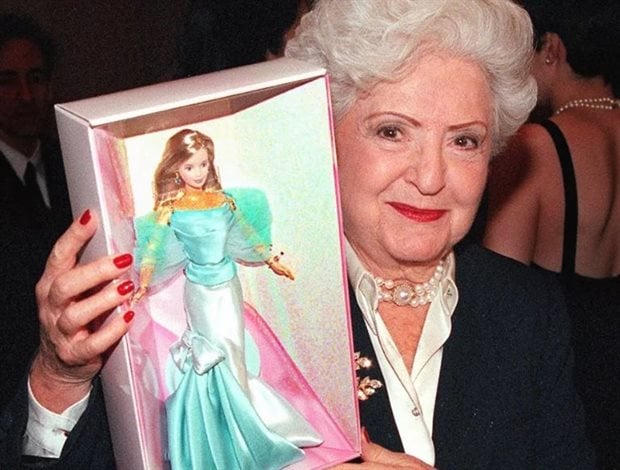
Related
Top stories


Logistics & TransportIata urges global safeguards for aircraft systems as 5G/6G rollout continues
4 hours

AgricultureAgricultural exports from Africa are not doing well. Four ways to change that
Lilac Nachum 5 hours



They can also focus on the American company that markets it, Mattel, and its current difficulties in dealing with more interactive toys. Yet one story that’s much less known is that of Ruth Handler, the creator of Barbie and one of the founders of Mattel.
The first part of Ruth Handler’s life is a succession of challenges. Born Ruth Moskowicz in Denver, Colorado, in 1916, she and her family were Polish Jews who had earlier immigrated to the United States. The youngest of 10 children, she could not attend university and initially found work as a secretary. She married Elliot Handler in 1938 and together they traversed the ordeal of World War II, which affected all of the United States.
Then came financial hardship for the young couple, living in California with two children. At the time Ruth was 30, but she had a huge ambition for her life and a big vision for the Handler family.
She encouraged her husband to use his design skills to create a company manufacturing plastic objects. Mattel was founded in 1945 and success quickly arrived. Behind the scenes, Ruth’s creativity, energy, intelligence, willingness to take risks and determination worked wonders. While she didn’t take the title of president until 1967, these qualities made her the real leader of Mattel.
One of Ruth Handler’s rare qualities was her visionary ability to anticipate. She was able to analyse subtle signals in the marketplace, identify potential innovations, and develop strategic breakthroughs.
For example, Mattel was looking for an original way to promote one of its first toys, a plastic machine gun. While toys have previously been marketed to parents, who chose them for their offspring, Ruth had the idea of speaking directly to the end users, as such. The approach was the Mickey Mouse Club television programme, which Mattel sponsored in 1955.
After seeing the programme, thousands of children asked their parents for the new toy, a reversal from the traditional process. While this idea may seem unremarkable to us in the 21st century, it was a clear break in the marketing dogma of the time.
Another innovation was the cost of this promotion: $500,000, which at the time was the entire financial value of Mattel. A skillful poker player, Ruth Handler was ready to risk her firm’s entire future on a single advertising campaign.
Ruth wanted to make a toy for girls, and knew that she had a test market close at hand, her daughter Barbara. The idea emerged during a trip that the family took to Switzerland in 1956. In the window of a Swiss shop Ruth discovered a sex-symbol doll with a generous shape, Bild Lilli, based on a cartoon character created for the German tabloid Bild. Ruth immediately understood the marketing potential of the doll, and took several back to the United States.
In the 1950s, dolls intended for girls were often babies or mother or housewife characters. Ruth Handler’s insight was that girls of the 1950s no longer wanted to grow up just to be mothers, and the Barbie doll announced a certain emancipation from the exclusive role of a mother. While we can now see in Barbie the personification of the woman as object, Ruth Handler’s idea was to create a toy that reflected women’s ability to work and be autonomous. As she stated in her 1994 autobiography:
“My whole philosophy of Barbie was that through the doll, the little girl could be anything she wanted to be. Barbie always represented the fact that a woman has choices.”When Ruth Handler presented her new concept to the head of a major American advertising agency, he stated: “It has no chance of succeeding. You’re joking”. Mattel’s executive committee – composed entirely of men except for Ruth – also opposed the idea. She not only imposed the project, she persuaded Mattel’s R&D department to make a doll that would be sold at cost, with profits coming from the sale of clothes and accessories.
At the same time, the innovation of a product whose profit comes from consumables (in this case, accessories) was born. We have here a stimulating break: the doll is sold at a very low price to capture a market and the profit is generated by the sale of accessories. This business model has now become the norm in many economic sectors.
When the Barbie doll was presented at the New York International Toy Fair in 1959, all the big buyers, including the major American store brands were unimpressed and refused to buy any. While many entrepreneurs would have given up, Ruth Handler decided to sell her doll directly to consumers. A major publicity campaign was launched, which resulted in the worldwide success that we know today.
For the next decade, Ruth Handler was instrumental in Mattel’s rise. However, in 1975 she and her husband resigned after a financial scandal. She died in 2002 and Elliot in 2011. Mattel and Barbie live on, however, its earnings reaching a five-year high in the first quarter of 2019, and Barbie continues to prosper, with sales up 12%.
Yet on the 60th anniversary of her creation, Ruth Handler’s contributions aren’t as well-known as they should be. She was an independent, creative and powerful woman, and a model of female leadership. And ultimately, a much more interesting and important model than Barbie doll herself.![]()

The Conversation Africa is an independent source of news and views from the academic and research community. Its aim is to promote better understanding of current affairs and complex issues, and allow for a better quality of public discourse and conversation.
Go to: https://theconversation.com/africa